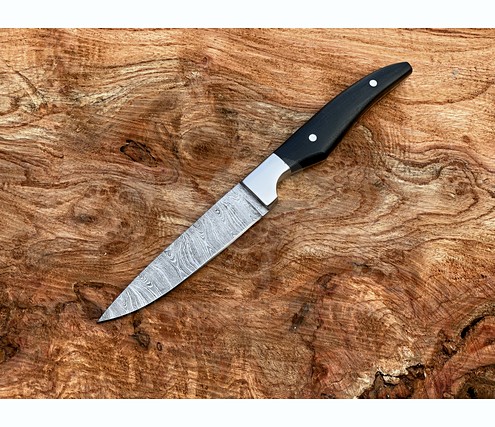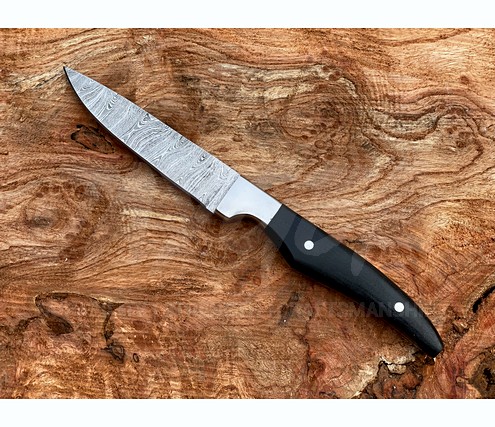In every culture, knives hold a special place as essential tools for survival, cooking, and craftsmanship. Among the wide variety of blades admired worldwide, two stand out for their heritage, design, and functionality: the ulu knife and the Damascus kitchen knife. Both have roots in tradition yet continue to serve as indispensable instruments in modern kitchens. While the ulu knife reflects centuries of indigenous innovation, the Damascus kitchen knife represents artistry and cutting-edge craftsmanship. Together, they show us how ancient designs remain relevant today.

The Legacy of the Ulu Knife
The ulu knife originates from the Arctic regions, crafted and used by Inuit, Yupik, and Aleut women for centuries. Its name “ulu” translates to “woman’s knife,” symbolizing its integral role in traditional households. Unlike Western-style knives with long blades, the ulu features a curved blade attached to a short handle, often centered above the blade. This design makes it perfect for rocking motions, allowing users to chop, mince, and slice with minimal effort.
Traditionally, ulu knives were crafted from stone, bone, or even slate. Handles were carved from driftwood or caribou antler. As metal became accessible through trade, the blades evolved into stronger, sharper tools. Today, modern ulu knives often feature stainless steel blades, yet the essence of their design remains unchanged.
The ulu knife’s strength lies in versatility. Indigenous communities used it for everything from skinning animals and cutting hair to preparing food. In modern kitchens, it shines as a multi-purpose tool for chopping vegetables, slicing herbs, cutting pizza, or filleting fish. Its ergonomic design makes it especially appealing for people with wrist or hand limitations, as the rocking motion reduces strain compared to traditional knives.
The Art of the Damascus Kitchen Knife
While the ulu knife represents cultural ingenuity, the Damascus kitchen knife symbolizes the fusion of art and science. Damascus steel has a legendary reputation, dating back to the Middle East over a thousand years ago. Ancient blacksmiths mastered the art of folding and forging steel into blades with extraordinary strength and a distinctive wavy pattern. These patterns—often compared to flowing water or wood grain—make Damascus blades instantly recognizable.
Modern Damascus kitchen knives are typically crafted by layering different types of steel, then hammering and folding them repeatedly. This not only strengthens the blade but also enhances sharpness and edge retention. For chefs and home cooks alike, a Damascus kitchen knife offers precision cutting, durability, and a touch of elegance.
The Damascus kitchen knife isn’t just about performance—it is also a piece of artistry. Every blade has a unique pattern, making each knife one-of-a-kind. Beyond functionality, these knives are prized by collectors and culinary enthusiasts who appreciate their beauty as much as their cutting ability.
Comparing Ulu Knife and Damascus Kitchen Knife
Although the ulu knife and Damascus kitchen knife come from vastly different traditions, they share common ground in utility and craftsmanship. The ulu knife is celebrated for its ergonomic rocking motion and cultural heritage, while the Damascus kitchen knife is revered for sharpness, strength, and beauty.
Design: The ulu has a semicircular blade with a top handle, while the Damascus kitchen knife usually resembles a chef’s knife with a long, pointed blade.
Function: Ulu knives excel at mincing, skinning, and chopping in a rocking motion. Damascus knives are perfect for precision slicing, dicing, and general kitchen tasks.
Aesthetic appeal: Damascus steel patterns are works of art, while the ulu carries symbolic and cultural beauty rooted in tradition.
Collectability: Both are highly collectible, with Damascus knives admired for craftsmanship and ulu knives valued for cultural authenticity.
Why Choose an Ulu Knife?
Modern home cooks and chefs are rediscovering the ulu knife for its practicality. Its rocking design makes it highly effective for chopping nuts, herbs, and cheese. It can cut through pizza or pie with ease, and it’s excellent for filleting fish thanks to the broad curved blade. Many users also find it easier on their joints, making it ideal for older individuals or those with arthritis.
Moreover, owning an ulu knife connects you to an ancient lineage of survival and adaptation. Each time you use it, you’re not just preparing food—you’re embracing a piece of history.
Why Invest in a Damascus Kitchen Knife?
On the other hand, the Damascus kitchen knife is a symbol of excellence in modern kitchens. Its razor-sharp edge means cleaner cuts, preserving the texture and flavor of ingredients. For professional chefs, it delivers precision and reliability during long hours of food preparation.
Beyond performance, Damascus knives are a statement of artistry. Many feature handcrafted handles made from exotic woods or resin, paired with intricate steel patterns. This makes them not only tools but also heirlooms passed down through generations.
The Perfect Pair for Every Kitchen
Rather than choosing between the ulu knife and Damascus kitchen knife, many enthusiasts find value in owning both. The ulu serves as a powerful everyday tool for chopping and mincing, while the Damascus kitchen knife handles delicate slicing and intricate tasks. Together, they provide versatility, efficiency, and a sense of tradition and artistry in every meal you prepare.

Final Thoughts
The ulu knife and the Damascus kitchen knife are more than just blades—they are symbols of human innovation, artistry, and culture. The ulu connects us to ancient indigenous traditions where survival depended on resourceful design. The Damascus kitchen knife represents mastery of metallurgy and the blending of beauty with performance.
In today’s kitchens, these knives continue to shine. Whether you’re preparing a family dinner, experimenting with gourmet recipes, or simply appreciating fine craftsmanship, owning these knives enriches both your cooking experience and your connection to history.
Choosing the ulu knife or the Damascus kitchen knife—or better yet, both—is not just about adding tools to your kitchen. It’s about embracing heritage, art, and the timeless power of well-crafted blades.